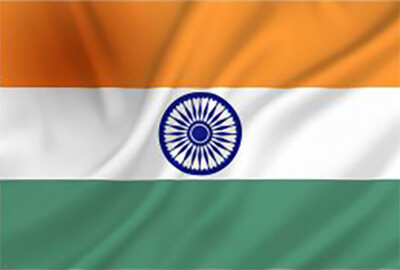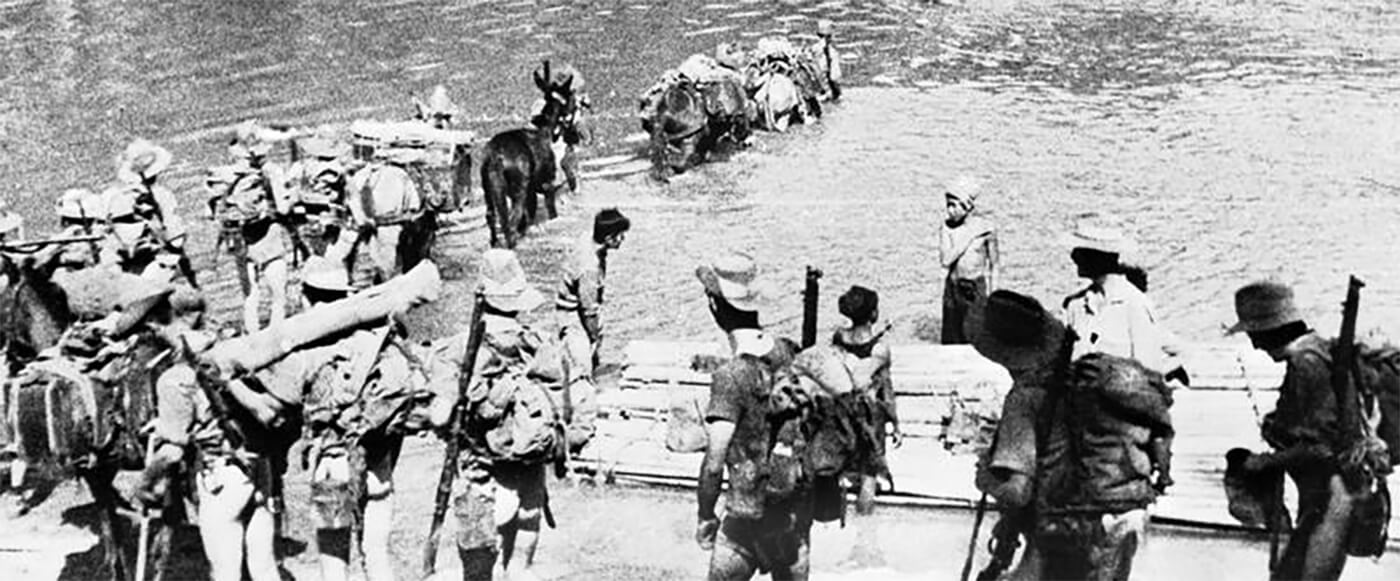| Page Created |
| March 21st, 2023 |
| Last Updated |
| March 30th, 2023 |
| Country |
  |
| Additional Information |
| Unit Order of Battle Commanders Operations Equipment Multimedia Sources Interactive Page |
| Operations |
| Asia |
February 14th, 1943 – July 12th, 1943
Operation Longcloth. 77th Indian Brigade, commanded by Brigadier Orde Wingate. Their mission is to cut the main railroad linking Burma and China, which is used by the Japanese to transport supplies and reinforcements.
To achieve this, the brigade undertook a grueling 225 kilometres trek through the dense jungle, crossing the Chindwin River and Irrawaddy River and climbing steep hills. Despite facing tough terrain, the 77th Brigade succeeds in their mission. They attack Japanese positions, destroy bridges, and disrupt enemy communication lines. However, the operation was not without its challenges. The 77th Brigade suffers heavy casualties from disease, exhaustion, and enemy fire. Operation Longcloth ended on July 12th, 1943.
Out of the 3056 men who crossed the Chindwin River, 2182 return safely by the closing date. The rest are considered missing in action. The Royal Air Force dropped 303 tons of supplies and flew 178 sorties. The operation results in significant casualties, with the British losing 345 men and the Gurkha regiments losing 185. 248 British soldiers become Prisoners of War, of which only 102 return alive after the liberation in 1945. Around one hundred Gurkha and Indian soldiers become Prisoners of War. Out of those who returned, only six hundred were fit for further service, and fewer than two hundred participated in later operations.
February 5th, 1944 – August 27th, 1944
Operation Thursday. The 3rd Indian Division, commanded by Brigadier Orde Wingate. Their mission was to assist Stilwell’s Ledo force in advancing towards Myitkyina, disrupt the Japanese 18th Division’s communication, obstruct their rear, and impede their reinforcement. It also aimed to enable Yunnan Chinese forces to penetrate Burma by creating a favorable situation and cause maximum harm and disarray to the enemy in North Burma. The Division was tasked with creating and securing the airstrips codenamed Broadway and Aberdeen. From where they would conduct guerrilla operations behind Japanese lines. The US Army Air Forces provided air support and supplies to the Allied forces.
On February 5th,1944, Fergusson’s 16th Brigade travels to Burma to create fortified bases with airstrips to aid Stilwell’s Ledo force and disrupt the Japanese 18th Division’s communication. The rest of the division flies in one month later, on March 5th, 1944. Three landing zones are selected, but Piccadilly is covered with logs, making landing impossible, so Broadway is used instead. Over 9,000 men are transferred to the landing zones over the next weeks.
Fergusson’s brigade establishes a base named Aberdeen north of Indaw, and Calvert’s brigade establishes White City at Mawlu. Ferocious jungle fighting ensued, with British and Japanese troops engaging in close combat. A setback occurs when Fergusson’s brigade tries to capture Indaw on March 24th, 1944. The Japanese repulse them.
On that very same day in March, General Wingate dies in a plane crash. Brigadier Lentaigne is chosen to replace him as commander of Special Force. Several changes are made at the highest level, including the diversion of air support and the subordination of Chindits already operating in Burma to General Stilwell. Lentaigne orders the main body of 111 Brigade to move north and build a new stronghold called Blackpool, which is immediately engaged in fierce fighting. The abandonment of White City allows the Japanese to move north, and the monsoon make it difficult for other brigades to help. The 111th Brigade eventually has to abandon Blackpool on May 25th, 1944.
In May 1944, control of the Chindits is handed over to Stilwell, who orders them to capture several well-defended Japanese positions without support from tanks or artillery, leading to heavy casualties. Calvert’s 77th Brigade takes Mogaung in June but suffers eight hundred casualties, causing Calvert to hand over the area and retreat to Kamaing.
The 111th Brigade is ordered to capture a hill but is exhausted and suffers from malaria, dysentery, and malnutrition. Most of the men are declared unfit for duty and evacuated. Morris Force also suffers heavy casualties and is evacuated. The 14th Brigade and the 3rd West African Brigade assist the 36th Infantry Division in its advance south of Mogaung and are withdrawn by August. The last Chindit leaves Burma on August 27th, 1944.
During Operation Thursday the Chindits suffer heavy casualties with 1,396 killed and 2,434 wounded. More than half of the force is hospitalised and is prescribed a special nutritional diet. However, the casualties suffered in 1944 are proportionally lower than those in 1943.

